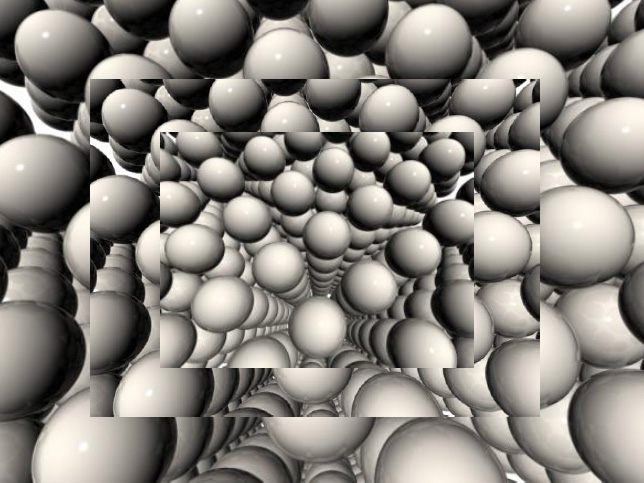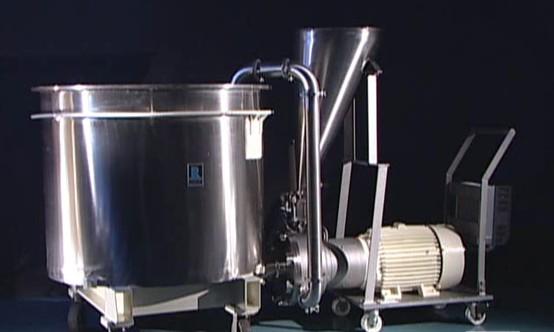Tech Report
Proper mixing of hollow microspheres

Technology Brief
Hollow microspheres are added to various materials to reduce weight and improve strength but in their dry form, these fillers present a mixing challenge due to their tendency to break under high shear conditions. Selecting the suitable mixer for a particular application is based on the viscosity of the liquid vehicle and the crush strength of the microspheres. Batch and continuous mixing solutions are discussed in this bulletin.
Hollow microspheres
Hollow glass microspheres, also called microballoons and glass bubbles, are lightweight engineered fillers used to impart a variety of desired properties. They lower the density and thermal conductivity of composites while improving durability, compressive strength and chemical resistance. Microspheres can also be made of ceramic, polymer, or other natural and synthetic materials. For instance, cosmetic-grade mineral and cellulose-based microspheres are added to create a luxurious silky texture, absorb oil or act as exfoliating agents.
Microspheres vary in sphericity and particle size, among other properties. But in general, because of their spherical profile, these particles have the lowest surface area to volume ratio of any shape. Compared to other fillers and additives, microspheres require less material to wet them out. By lowering binder demand, microspheres enable high solids formulations which can potentially lower product cost. In paints and coatings applications, increasing solids content reduces volatile organic compounds (VOCs), shrinkage and drying time.
Processing challenges
Mixing microspheres into a liquid vehicle can present some challenges. For one, high speed, high shear devices will break some grades of glass microspheres, rendering them ineffective. The higher the density of the glass spheres, the greater the crush strength. Hence, if a particular grade is selected specifically for its very low density, the manufacturing process must accommodate the filler`s inherent fragility.
Apart from the type and grade of the filler, other factors such as material viscosity and temperature can contribute to damage of the individual glass spheres.
In addition, proper handling and mixing is required so that the microspheres, supplied in a white powder form, do not become airborne. Most grades of microspheres have a tendency to float on the surface of the fluid making them more difficult to incorporate without breakage.
Mixer selection
Viscosity and the level of shear are the main factors that must be considered when selecting the appropriate mixer for a particular microsphere-filled application. Double planetary mixers (DPMs) are one of the most popular equipment for mixing fragile microspheres because they can accommodate both low and high viscosities. The planetary stirrers constantly advance into the batch, providing thorough but gentle agitation that is ideal for mixing in microspheres into almost any liquid vehicle. The relatively low speed range of the DPM ensures minimal breakage of the glass spheres. Compared to anchors and other agitators with a fixed axis of rotation, double planetary mixers are more efficient at wetting out the microsphere powders especially in high viscosity applications. Horizontal blenders with ribbon or paddle style agitators are also used for batch mixing microspheres into liquid. These devices are comparatively economical but generally require more elaborate clean-up than vertical change-can mixers like the DPM.
For inline or continuous processing requirements, the dispersion of microspheres into low-viscosity liquids can be accomplished through the use of a powder induction system such as the Ross Solids/Liquid Injection Manifold (SLIM). The SLIM technology is based on a rotor/stator mixer specially designed to produce negative pressure for drawing powders sub-surface. In order to minimize shear, the stator assembly can be removed, leaving only the open-blade rotor. This "stator-less" configuration of the SLIM is very effective for low viscosity microsphere applications up to 10,000-20,000 cP. By introducing powders sub-surface, floating and dusting issues are eliminated.
Testing is recommended to confirm the best strategy for mixing a particular grade of hollow microspheres.
Sample Application: Microsphere-filled Polymer

Pictured is a mobile inline SLIM mixer that was successfully tested for the preparation of a polymer pre-blend. The previous mixer consisted of counter-flow impellers in a jacketed blend tank; it took four hours to add microballoons into the urethane polymer and form a 3% solution. The stator-less SLIM system achieved the desired results in less than one hour.